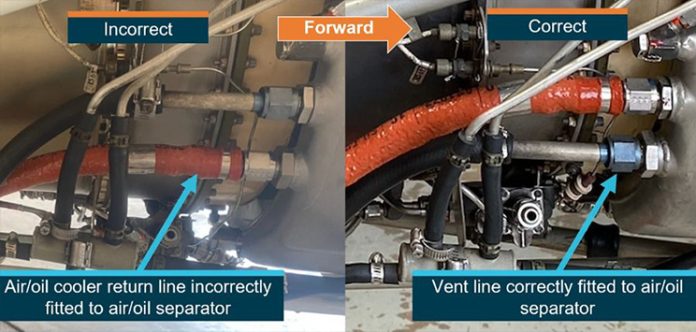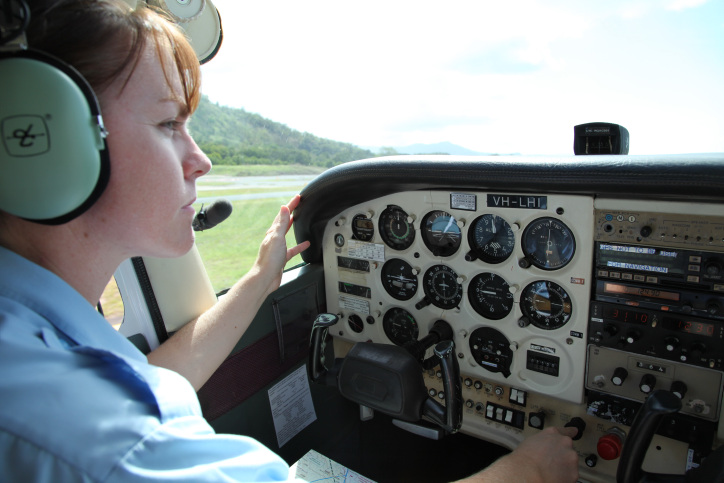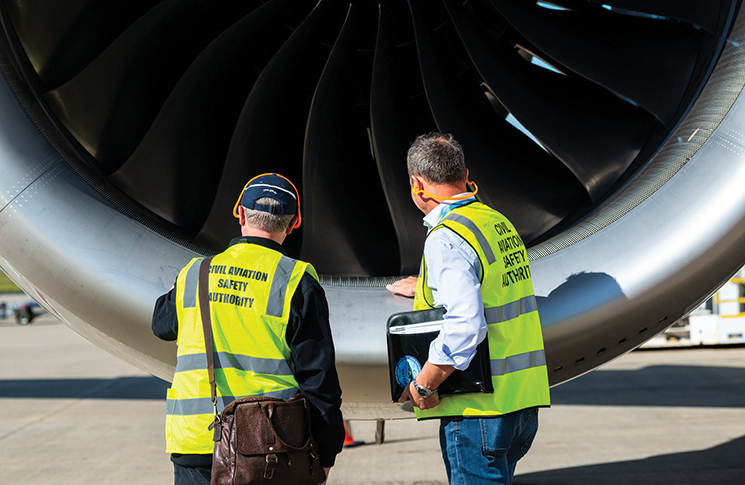A serious in-flight incident highlights the hazard posed by maintenance error, and the importance of knowledge and procedure in minimising it.
A report by the Australian Transport Safety Bureau (ATSB) into an incident in 2021 found oil lines on an aircraft had been mistakenly transposed.
The Cessna 441 Conquest II turboprop aircraft, operating a charter flight in the Northern Territory, had to divert after the pilot observed abnormal engine indications.
The twin-engine aircraft was flying from Sawfish Camp to Darwin with 9 passengers when the pilot observed abnormal torque fluctuations, as well as high oil pressure and high oil temperature indications, from the right TPE-331 engine.
The pilot diverted the aircraft to Tindal Airport and landed uneventfully, with maintenance checks identifying that the air/oil cooler return line and air/oil separator vent line had been incorrectly transposed during a recent engine change.
‘The oil lines could be easily transposed, given they were long and flexible enough to each reach either port, and they were the same size, used the same thread, and were almost identical in appearance,’ ATSB Director Transport Safety Mike Walker said.
However, since there was no record of which engineer had done the work, it was not possible to determine whether there were any individual or environmental factors associated with the error, or the extent to which the available maintenance documentation had been checked.
After the oil line issue was rectified, there were further abnormal indications from the right engine, during a flight about 3 weeks after the initial occurrence. After landing, the reduction gearbox scavenge pump was found to be unserviceable.
The ATSB’s final report notes the incorrect oil flow resulting from the transposed oil lines had damaged the engine’s air/oil separator, which then increased the reduction gearbox scavenge pump pressure. This compromised the structural integrity of the pump housing.
‘These additional problems had not been detected during the initial maintenance,’ Dr Walker said.
The report says that in 1990 the engine’s manufacturer, Honeywell, issued a service information letter advising the oil lines had been transposed on several previous occasions on similar aircraft.
Following this occurrence, the operator, Chartair, commenced a fleet-wide program to add markings to engine oil tanks, conducted toolbox talks with engineering staff about distractions during maintenance and began documenting each stage of engine changes.
In addition, Honeywell reissued the service information letter with additional information and guidance.
‘This investigation highlights to maintenance engineers that it is important to check relevant documentation rather than relying on experience and memory, and to remain familiar with other data such as manufacturer service information letters,’ Walker said.
‘Further, since maintenance documents do not always provide advice on non-routine technical situations, operators and maintainers should seek technical advice from the manufacturer to ensure that non-routine problems are fully rectified prior to releasing an aircraft to service.’





